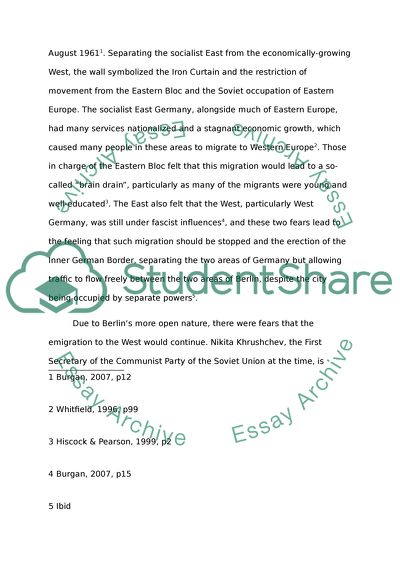Cite this document
(“The Fall of the Berlin Wall Essay Example | Topics and Well Written Essays - 750 words”, n.d.)
Retrieved from https://studentshare.org/history/1455406-the-fallen-of-the-berlin-wall
Retrieved from https://studentshare.org/history/1455406-the-fallen-of-the-berlin-wall
(The Fall of the Berlin Wall Essay Example | Topics and Well Written Essays - 750 Words)
https://studentshare.org/history/1455406-the-fallen-of-the-berlin-wall.
https://studentshare.org/history/1455406-the-fallen-of-the-berlin-wall.
“The Fall of the Berlin Wall Essay Example | Topics and Well Written Essays - 750 Words”, n.d. https://studentshare.org/history/1455406-the-fallen-of-the-berlin-wall.


